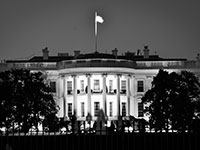
On Tuesday, the President officially killed the Obama-era Fair Pay and Safe Workplaces (“FPSW”) Initiative, which came to be known as the “Blacklisting regs”. The move was widely expected as Executive Order 13673, the Federal Acquisition Council’s Regulations and the Department of Labor’s Guidance were widely panned by federal contractors. However, the Trump Administration’s path to dump this initiative represents how Washington makes it difficult to do even the simplest things quickly.
What was Fair Pay and Safe Workplaces? The FPSW initiative arose out of a Senate report that “dozens” of federal contractors had significant health and safety and wage and hour violations while continuing to receive federal contracts. A second report by the Government Accountability Office (“GAO”) stated that, over a five-year period, 49 contractors were cited for labor law violations and paid penalties. While the government estimated that there are over 13,000 federal contractors, the Department of Labor recognized that its efforts are aimed at “a small number of contractors” and that “most federal contractors comply with applicable laws.” Notwithstanding the clear recognition that a miniscule number of contractors violated the law, the administration decided to place complex reporting obligations on almost all federal contractors and subcontractors. In essence, those obligations required that contractors with over $500,000 in federal contracts report whether they had been subject to any “administrative merits determination, arbitral award or decision or civil judgment” arising out of 14 enumerated federal labor laws and the state equivalents in the preceding 3-year period. In addition to reporting by covered contractors, the Executive Order required that subcontractors with contracts over $500,000 also report the labor law violations. The initiative contemplated pre-award reporting and approval as well as reporting every six months following the award. Through a multifaceted reporting scheme, the report would be made to the contracting officer who would work with the contracting agency’s “Labor Compliance Advisors” to assist the agency in making a determination of “responsibility.” Factors related to the responsibility determination included whether the labor law violations were serious, repeated, willful, or pervasive violations.
The initiative also took aim at another aspect of Obama’s domestic agenda by severely limiting arbitration agreements. The Executive Order banned pre-dispute arbitration agreements for Title VII and gender related tort claims. The provision followed the Franken Amendment which contained a similar ban on arbitration agreements for defense contractors.
What Happened to It? FPSW hit its first roadblock on what was essentially its October 25, 2016 effective date. On October 24, 2016, U.S. District Court Judge Marcia Crone of the Eastern District of Texas granted a nationwide preliminary injunction enjoining implementation of FPSW. Assoc. Builders & Contrs. of Se. Tex. v. Rung, Case No. 1:16-CV-425. In addition to enjoining implementation of the reporting obligations, the court enjoined enforcement of the pre-dispute arbitration ban on Title VII claims finding that the reporting provisions:
- exceeded the statutory authority under the Procurement Act and other laws;
- required “compelled speech” and, on that basis, violate the First Amendment;
- violated federal contractors’ due process rights; and
- violated the Administrative Procedures Act because they are arbitrary and capricious.
The court also determined that the arbitration ban appeared to violate the Federal Arbitration Act, which generally requires that courts enforce agreements to arbitrate. The October injunction order is currently pending before the Fifth Circuit (Docket No. 16-41707). We expect the Department of Justice will withdraw its defense of the rule based on the Presidential and Congressional action.
How Did Congress and Trump Kill It? The President and Congress used the little-known Congressional Review Act to scuttle the initiative. The Congressional Review Act (“CRA”), 5 U.S.C. § 801et seq. requires major rules to be submitted to and considered by Congress 60 days before they take effect. By joint resolution, Congress can approve or disapprove of the regulation, which then goes to the President. If Congress adjourns its annual session less than 60 “legislative days” in the House of Representatives or 60 “session days” in the Senate after a rule is submitted to it, then the rule is carried over to the next session of Congress and subject to possible disapproval during that session. This mechanism allowed President Bush to not implement DOL’s Clinton-era ergonomics rule. The Obama administration failed to finalize the rules before the CRA deadline which allowed the present Congress to take action under the CRA and President Trump to sign the disapproval measure.
What Else is on The Chopping Block? Likely nothing else using this method. The CRA would not figure into other DOL initiatives such as the Obama overtime rules or LGBT protections because the administration finalized its rulemakings before the CRA deadline. The paid sick leave requirements for federal contractors may seem like an attractive target. However, it should be noted that, during the campaign, Trump made comments that appeared to support some form of leave. Marshaling a CRA resolution is a large undertaking that requires almost unanimous hatred of a measure among a party. FPSW fit that bill based on the complexity of the measure and a clear sentiment among contractors that it overreached. It will be difficult to find a similar issue moving forward.
Contrary to many bold predictions that were made, it has become painfully clear to the Administration that getting things done (or “draining the swamp”) in Washington takes deep knowledge of the tools available to policymakers. Employers should ensure that its advisers have significant policy and legal experience in evaluating what measures the Administration will be able to roll back and how long that process may take.

